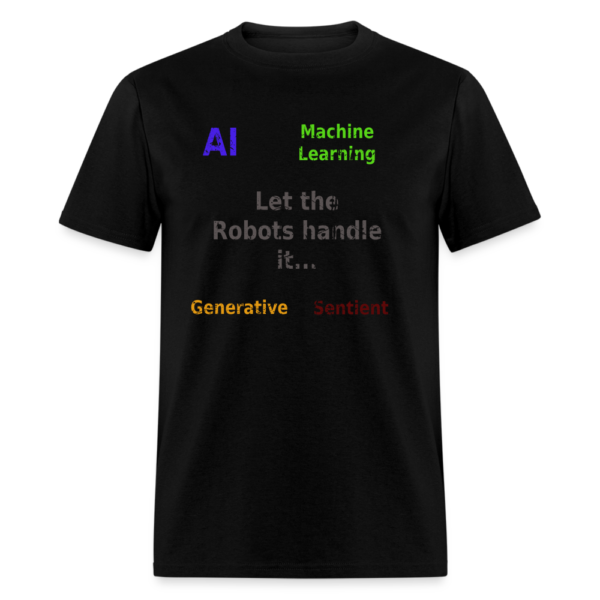Your cart is currently empty!
Category: TECH
Substack’s January 2025 Outage: What Happened and What It Means for Independent Writers
On the evening of January 21, 2025, Substack, a platform renowned for empowering independent writers and creators, experienced a major service disruption. The outage, which began around 8:00 PM, affected hundreds of users worldwide. The disruption resulted in increased latency, error messages, and an inability to access or load content on both the Substack website and app. As a result, many creators and subscribers were left scrambling to understand what went wrong and when normal functionality would return.
A Timeline of the Outage
The first signs of trouble emerged when users reported significant delays in loading their Substack dashboards and newsletters. Shortly thereafter, error messages began to appear, preventing creators from publishing new content and readers from accessing their subscriptions. By 8:30 PM, social media platforms like Twitter were flooded with complaints and inquiries directed at Substack’s official accounts.
Acknowledging the problem, Substack released a brief statement around 9:00 PM, confirming the outage and assuring users that the issue was under investigation. “We are aware of the current service disruption and are working diligently to resolve it as quickly as possible,” the company tweeted. While this provided some reassurance, many users expressed frustration over the lack of detailed updates.
As of this writing, Substack has not disclosed the root cause of the outage, but a full post-mortem report is expected in the coming days.
How Did This Affect Creators and Readers?
For independent writers and creators, Substack is more than just a platform; it’s a livelihood. The outage disrupted workflows, delayed time-sensitive publications, and, in some cases, led to a loss of revenue. Writers who rely on Substack to send out newsletters or host paid subscription content were particularly hard-hit, as they had no immediate alternative to reach their audiences.
Subscribers, on the other hand, faced their own frustrations. Many readers who use Substack to stay updated on topics ranging from politics to lifestyle found themselves unable to access the content they had paid for. For those relying on Substack’s mobile app, the inability to load newsletters added another layer of inconvenience.
The Bigger Picture: Why Do Outages Matter?
In an increasingly digital world, outages like this highlight the risks of relying heavily on a single platform. For creators, Substack’s disruption serves as a reminder of the importance of diversifying income streams and communication channels. While Substack has established itself as a reliable platform over the years, no service is immune to technical failures.
This outage also underscores the broader challenges faced by SaaS (Software as a Service) platforms. With thousands of users accessing Substack simultaneously, even minor technical issues can escalate into widespread disruptions. For Substack, this event is likely to spark conversations about the need for more robust infrastructure and transparent communication during crises.
Lessons for Independent Writers
- Diversify Your Platforms: While Substack is a powerful tool, relying solely on one platform can be risky. Consider building an email list independent of Substack, using tools like Mailchimp or ConvertKit, to ensure you have direct access to your audience.
- Stay Active on Social Media: Social platforms like Twitter and Instagram can serve as backup communication channels during outages. Keep your followers informed and engaged by posting updates and alternative links to your content.
- Have a Contingency Plan: Prepare for unexpected disruptions by keeping drafts of your newsletters or posts saved locally. This ensures you can quickly pivot to another platform if needed.
- Engage with Your Audience: Use outages as an opportunity to connect with your readers on a personal level. Share your challenges and updates, and encourage feedback to maintain trust and loyalty.
What’s Next for Substack?
In the wake of the January 2025 outage, Substack faces the dual challenge of restoring user confidence and preventing future disruptions. The platform’s response—both in terms of technical fixes and transparency—will play a crucial role in shaping its reputation moving forward.
Substack’s engineering team is likely working around the clock to identify and address the root cause of the outage. Whether the issue stems from server overload, a cyberattack, or a technical glitch, the company will need to invest in more robust systems to ensure reliability.
Additionally, Substack may consider implementing features like offline access for newsletters or providing clearer communication channels during outages. Proactive measures like these can help mitigate the impact of future disruptions and reassure users that their content and data are secure.
Conclusion
The January 2025 outage serves as a wake-up call for both Substack and its community of writers and readers. While the platform has undoubtedly revolutionized independent publishing, this incident highlights the importance of resilience, adaptability, and communication in the digital age.
For creators, the key takeaway is clear: diversify, plan ahead, and stay connected with your audience. For Substack, the path forward involves not only addressing the immediate technical issues but also building a more robust and transparent system to support its growing user base.
As Substack continues to investigate and resolve the outage, we’d love to hear from you. How did the disruption affect your experience on the platform? What steps are you taking to prepare for future challenges? Share your thoughts in the comments below and don’t forget to spread the word by sharing this article. Together, we can navigate the ever-changing landscape of digital publishing.
Vintage I Love Tech Unisex Classic T-Shirt
$13.99“Geek out in style with the Vintage ‘I Love Tech’ T-Shirt! Perfect for tech lovers, gadget enthusiasts, and anyone who’d rather be coding—show off your love for all things techy!”
-

Hungry and Humble Football Player Flapping Arms Touchdown Celebration Unisex Classic T-Shirt #philly
$19.99 Select options This product has multiple variants. The options may be chosen on the product page -

Africatown in Philly Phrase Unisex Classic T-Shirt
$13.99 Select options This product has multiple variants. The options may be chosen on the product page -

Vintage Funny Cat Selfie UFO Alien Invasion Unisex Classic T-Shirt
$13.99 Select options This product has multiple variants. The options may be chosen on the product page -

Vintage Philly Underdogs German Shepherds Unisex Classic T-Shirt
$9.99 Select options This product has multiple variants. The options may be chosen on the product page -

Life is Better with AI Voxel Art Unisex Classic T-Shirt
$19.99 Select options This product has multiple variants. The options may be chosen on the product page
————————————————
We use AI GPT Chatbots to help with our content and may get some things wrong.
————————————————-
How AI Is Transforming the Film Industry: A Look at ‘The Brutalist’ and Beyond
Recent developments in artificial intelligence (AI) have revolutionized various industries, and the film industry is no exception. From enhancing visual effects to transforming actor performances and even influencing architectural design, AI has become a vital tool in modern filmmaking. However, as these advancements unfold, they raise critical debates about the authenticity of the art form and the future of traditional roles in cinema.
AI’s Role in Visual Effects
Visual effects (VFX) have long been a cornerstone of the film industry, but AI is taking them to new heights. Machine learning algorithms can now generate hyper-realistic environments, characters, and scenes far more efficiently than traditional methods. Tools powered by AI can analyze vast datasets to produce stunning effects, cutting down production time and costs. For example, AI-driven software can create realistic simulations of natural phenomena like water, fire, and weather, which would otherwise require extensive manual labor.
In films like The Brutalist, AI’s impact is particularly evident. The film utilized AI to design complex architectural structures that are central to its visual narrative. By feeding AI programs with data on architectural styles and historical references, filmmakers were able to produce innovative and visually striking designs that enhance the storytelling.
Enhancing Actor Performances with AI
One of the most intriguing applications of AI in cinema is its ability to enhance actor performances. In The Brutalist, for instance, AI was employed to refine Adrien Brody’s Hungarian accent, ensuring authenticity and consistency throughout the film. This technology analyzes speech patterns and accents, making real-time adjustments to align with the desired outcome.
Beyond accents, AI is also being used to de-age actors, replace voices, and even create digital doubles for stunt scenes. These innovations not only save time but also allow filmmakers to push the boundaries of storytelling. However, the use of AI in this context raises ethical questions about the authenticity of performances and the potential for over-reliance on technology.
Architectural Design in Cinema: The AI Touch
Architecture plays a significant role in creating immersive film worlds, and AI is proving to be a game-changer in this area. In The Brutalist, AI tools were used to conceptualize and design buildings that reflect the film’s thematic elements. By integrating AI into the creative process, filmmakers can explore architectural possibilities that might be too complex or time-consuming to design manually.
This approach not only enhances the visual appeal of films but also adds layers of depth to storytelling. For instance, AI-generated architectural designs can evoke specific emotions, complementing the narrative’s tone and setting. However, this trend also raises questions about the future of traditional design roles in cinema and the broader implications for architects and set designers.
The Debate: Authenticity vs. Innovation
While the integration of AI in filmmaking offers numerous advantages, it also sparks debates about the authenticity of the art form. Critics argue that relying on AI could diminish the human touch that defines cinema. For example, can a digitally enhanced performance truly capture the nuances of human emotion? Similarly, does AI-driven design compromise the artistic integrity of traditional craftsmanship?
On the other hand, proponents of AI in cinema highlight its potential to democratize filmmaking. By reducing costs and streamlining production processes, AI makes high-quality filmmaking more accessible to independent creators. Additionally, AI can serve as a tool for innovation, enabling filmmakers to experiment with new ideas and push the boundaries of what’s possible.
The Future of Traditional Roles in Cinema
The rise of AI inevitably raises concerns about job displacement in the film industry. Roles that once required human expertise, such as VFX artists, sound designers, and even scriptwriters, are now being augmented or replaced by AI tools. While this shift presents challenges, it also opens up new opportunities for professionals to adapt and evolve.
For instance, instead of manually designing visual effects, VFX artists can now focus on refining AI-generated outputs and adding creative touches. Similarly, architects and set designers can collaborate with AI to explore innovative designs, rather than starting from scratch. Ultimately, the key lies in finding a balance between human creativity and technological efficiency.
A Balanced Approach to AI in Film
As AI continues to make inroads into the film industry, striking a balance between innovation and authenticity is crucial. Filmmakers must navigate the ethical and creative challenges posed by AI while embracing its potential to enhance storytelling. By viewing AI as a collaborative tool rather than a replacement, the industry can ensure that technology complements rather than compromises the art of filmmaking.
Conclusion: The Evolving Landscape of Cinema
The integration of AI into the film industry marks a new era of innovation and creativity. From designing breathtaking visuals to enhancing performances and architectural elements, AI is reshaping the way stories are told. However, as these technologies evolve, it’s essential to address the ethical and artistic questions they raise. By fostering a dialogue between tradition and innovation, the film industry can continue to thrive in an increasingly digital age.
We’d love to hear your thoughts on this topic! How do you feel about the use of AI in filmmaking? Do you see it as a tool for innovation or a threat to authenticity? Share your opinions in the comments below, and don’t forget to share this post with fellow film enthusiasts.
Vintage I Love Tech Unisex Classic T-Shirt
$13.99“Geek out in style with the Vintage ‘I Love Tech’ T-Shirt! Perfect for tech lovers, gadget enthusiasts, and anyone who’d rather be coding—show off your love for all things techy!”
-

Hungry and Humble Football Player Flapping Arms Touchdown Celebration Unisex Classic T-Shirt #philly
$19.99 Select options This product has multiple variants. The options may be chosen on the product page -

Africatown in Philly Phrase Unisex Classic T-Shirt
$13.99 Select options This product has multiple variants. The options may be chosen on the product page -

Vintage Funny Cat Selfie UFO Alien Invasion Unisex Classic T-Shirt
$13.99 Select options This product has multiple variants. The options may be chosen on the product page -

Vintage Philly Underdogs German Shepherds Unisex Classic T-Shirt
$9.99 Select options This product has multiple variants. The options may be chosen on the product page -

Life is Better with AI Voxel Art Unisex Classic T-Shirt
$19.99 Select options This product has multiple variants. The options may be chosen on the product page
————————————————
We use AI GPT Chatbots to help with our content and may get some things wrong.
————————————————-
-
PanfurWare LLC Free Music Promotion
At PanfurWare LLC, we are dedicated to helping artists gain the exposure they deserve. Our music promotion offer is tailored to support clean-edit music releases, ensuring that your work reaches the right audience in a professional and family-friendly way. Here’s what our service includes:
What We Provide:
- Website Feature: Your clean-edit Spotify link will be showcased on PanfurWare LLC, boosting your online visibility and attracting potential listeners from our website audience.
- Social Media Promotion: We promote your music across major social media platforms, including Facebook, BlueSky, X (formerly Twitter), and Instagram. This multi-platform approach ensures your music gets maximum exposure to diverse audiences.
- Expanded Artist Bio: Provide us with a short bio, and we’ll use advanced AI tools to expand and refine it into a compelling story that highlights your musical journey and unique style. This enhanced bio will help you connect more deeply with your audience.
Requirements:
To get started, please fill out the form below with the following details:
- A short artist bio for us to expand using AI.
- The Spotify link to your clean-version single.
- Your email address
With this post, we’ll make sure your music receives professional, targeted promotion that aligns with your values and artistic vision. Whether you’re an emerging artist or looking to expand your reach, PanfurWare LLC is here to help you grow your audience and elevate your music career! Feel free to share and to say hello in the comments below.
I Can’t | Music Studio Unisex Classic T-Shirt
$19.99I Can’t | Music Studio Unisex Classic T-Shirt. Show off your passion for music with the “I Can’t | Music Studio” Unisex Classic T-Shirt. Designed for musicians, producers, and music lovers, this comfortable tee is perfect for studio sessions, casual outings, or expressing your creative vibes.
-

Hungry and Humble Football Player Flapping Arms Touchdown Celebration Unisex Classic T-Shirt #philly
$19.99 Select options This product has multiple variants. The options may be chosen on the product page -

Africatown in Philly Phrase Unisex Classic T-Shirt
$13.99 Select options This product has multiple variants. The options may be chosen on the product page -

Vintage Funny Cat Selfie UFO Alien Invasion Unisex Classic T-Shirt
$13.99 Select options This product has multiple variants. The options may be chosen on the product page -

Vintage Philly Underdogs German Shepherds Unisex Classic T-Shirt
$9.99 Select options This product has multiple variants. The options may be chosen on the product page -

Life is Better with AI Voxel Art Unisex Classic T-Shirt
$19.99 Select options This product has multiple variants. The options may be chosen on the product page
————————————————
We use AI GPT Chatbots to help with our content and may get some things wrong.
————————————————-
Zoo: The Telegram Game Revolutionizing Blockchain Gaming
The world of blockchain-based gaming is evolving rapidly, and the Telegram game ‘Zoo’ has become one of the most talked-about platforms in the space. Combining elements of strategy, entertainment, and cryptocurrency rewards, Zoo offers players a unique opportunity to earn tokens through in-game activities while enjoying the immersive experience of managing their very own virtual zoo.
What is Zoo?
Zoo is a blockchain-integrated game available on Telegram, designed for players to build and manage their zoos. Drawing inspiration from popular simulation games like Zoo Tycoon and Planet Zoo, Zoo challenges players to care for a variety of animals, expand their facilities, and engage in fun daily activities. However, what sets Zoo apart from other simulation games is its airdrop feature, where players earn cryptocurrency tokens based on their in-game achievements and activity.
How Does the Airdrop System Work?
The core attraction of Zoo is its rewarding airdrop system. By completing in-game tasks such as feeding animals, solving puzzles, and participating in events, players earn in-game currency that translates into real-world value through token airdrops. These tokens are distributed directly to players’ cryptocurrency wallets, making Zoo not just a game but a potential earning opportunity.
Here are the key components of Zoo’s airdrop system:
- In-Game Currency: Players earn Zoo Coins by completing daily tasks, interacting with their zoo, and solving puzzles.
- Token Conversion: Zoo Coins can be converted into blockchain-based tokens that hold real-world value.
- Activity-Based Rewards: The more you engage with the game, the higher your rewards. Regular interaction—such as feeding animals on time and completing daily puzzles—is crucial.
This integration of gaming with cryptocurrency aligns with the broader trend of “play-to-earn” models in blockchain gaming, making Zoo an excellent choice for those looking to explore this emerging sector.
Key Features of Zoo
- Build and Manage Your Zoo: Start with a small zoo and gradually expand it by adding new animals, upgrading enclosures, and improving facilities.
- Daily Puzzles and Riddles: Solve engaging puzzles like rebus challenges and daily riddles to earn extra rewards.
- Surprise Boxes: Participate in in-game events to unlock surprise boxes containing rare items or bonus Zoo Coins.
- Telegram Integration: All gameplay happens within Telegram, making it easily accessible and highly interactive.
- Community Engagement: Join the dedicated Telegram channel to receive notifications about in-game events like feeding times and special promotions.
Engagement Numbers That Speak Volumes
Zoo’s popularity is evident in its impressive engagement numbers. The game’s official Telegram channel boasts over 100,000 active members, with daily activity surpassing 30,000 unique interactions. Events such as surprise boxes and puzzles consistently attract thousands of participants, creating a vibrant and thriving community.
How to Get Started with Zoo
Getting started with Zoo is simple and straightforward. Here’s how you can join the fun:
- Join the Telegram Game: Search for the Zoo game on Telegram and start interacting with the bot.
- Create Your Zoo: Follow the guided steps to set up your virtual zoo and choose your starting animals.
- Engage with Daily Activities: Check in daily to feed your animals, solve puzzles, and participate in events.
- Track Your Rewards: Monitor your in-game currency and airdrop earnings through the Telegram interface.
- Connect Your Wallet: Ensure your cryptocurrency wallet is linked to the game so you can receive your airdropped tokens seamlessly.
Why Telegram Makes Zoo Unique
Zoo’s integration with Telegram adds a layer of convenience and interactivity not found in traditional games. Since Telegram is already a widely used platform for communication and community-building, players can easily stay connected to updates, tips, and fellow gamers. The dedicated Telegram channel for Zoo provides:
- Real-Time Notifications: Stay informed about feeding schedules, special events, and surprise boxes.
- Gameplay Tips: Get advice on maximizing your rewards and building the best zoo.
- Community Support: Interact with other players to share strategies and celebrate achievements.
Maximizing Your Airdrop Rewards
To get the most out of Zoo’s airdrop system, consistency is key. Here are some tips to maximize your rewards:
- Log In Daily: Regular interaction with your zoo ensures you don’t miss feeding times or event opportunities.
- Solve All Puzzles: Daily puzzles and riddles offer significant bonuses, so make it a habit to complete them.
- Join Events: Participate in surprise box events and community challenges to earn rare rewards.
- Expand Strategically: Invest your Zoo Coins in upgrades that increase your earning potential, such as larger enclosures or higher-capacity feeding stations.
Zoo and the Future of Blockchain Gaming
Zoo exemplifies the growing intersection of gaming and blockchain technology. By allowing players to convert in-game achievements into real-world value, Zoo is part of a larger movement that is reshaping the gaming industry. Blockchain-based games like Zoo provide players with:
- Ownership of Assets: Players truly own their in-game assets, which can be traded or sold outside the game.
- Earning Potential: Games are no longer just for fun; they can be a source of income.
- Community Engagement: Blockchain gaming fosters a sense of community through shared goals and decentralized governance.
Join the Zoo Craze Today!
If you’re looking for a fun, engaging, and rewarding gaming experience, Zoo is the perfect choice. Whether you’re a casual gamer or a blockchain enthusiast, Zoo offers something for everyone. Don’t miss out on the chance to build your dream zoo and earn cryptocurrency rewards along the way.
Head over to Telegram, search for Zoo, and start playing today! Don’t forget to join the official Telegram channel for tips, updates, and community events.
We Want to Hear from You
Have you tried Zoo? What’s your favorite part of the game? Share your thoughts in the comments below and let us know how you’re maximizing your rewards. If you enjoyed this post, feel free to share it with your friends and family. Let’s grow the Zoo community together!
Life Is Better Gaming Unisex Classic T-Shirt
$19.99Life Is Better Gaming Unisex Classic T-Shirt. Level up your wardrobe with the Life Is Better Gaming Unisex Classic T-Shirt. Featuring a bold and vibrant gaming-inspired design, this comfortable tee is perfect for gamers who want to show off their passion. Ideal for casual wear or gaming sessions with friends.
-

Hungry and Humble Football Player Flapping Arms Touchdown Celebration Unisex Classic T-Shirt #philly
$19.99 Select options This product has multiple variants. The options may be chosen on the product page -

Africatown in Philly Phrase Unisex Classic T-Shirt
$13.99 Select options This product has multiple variants. The options may be chosen on the product page -

Vintage Funny Cat Selfie UFO Alien Invasion Unisex Classic T-Shirt
$13.99 Select options This product has multiple variants. The options may be chosen on the product page -

Vintage Philly Underdogs German Shepherds Unisex Classic T-Shirt
$9.99 Select options This product has multiple variants. The options may be chosen on the product page -

Life is Better with AI Voxel Art Unisex Classic T-Shirt
$19.99 Select options This product has multiple variants. The options may be chosen on the product page
————————————————
We use AI GPT Chatbots to help with our content and may get some things wrong.
————————————————-
The Future of Travel: SpaceX’s Earth Rocket Passenger Transport Revolution?
In spite of the latest test rocket failure, imagine waking up in Los Angeles, grabbing breakfast at your favorite local spot, and having lunch in London just a couple of hours later. While this may sound like science fiction, the visionary technologies developed by SpaceX, the company founded by Elon Musk, inspire a hypothetical concept that could make this dream a reality: Earth-to-Earth rocket passenger travel. This idea, not officially proposed by SpaceX but rather a thought project based on their current tech, remains purely theoretical and on paper. However, it offers a glimpse into a future of unparalleled speeds and a transformative travel experience, promising to redefine how we think about global transportation.
What Is SpaceX Earth Rocket Passenger Travel?
SpaceX’s Earth Rocket Passenger Transport system could utilize the same advanced technologies that power their interplanetary Starship rockets. By leveraging these reusable rockets, SpaceX might offer high-speed point-to-point travel on Earth. The concept is simple yet revolutionary: passengers could board a rocket in one city, soar through suborbital space, and land in another city—all within minutes.
This innovation might not just cut down travel time; it could be a complete reimagining of how we move across the globe. From executives heading to urgent international meetings to families reuniting across continents, the potential applications are endless.
How Fast Are We Talking?
The numbers are astonishing. Traditional long-haul flights that take hours or even half a day could be reduced to mere minutes. Here are some jaw-dropping examples:
- Los Angeles to New York: 5 hours, 25 minutes by plane —> 25 minutes by rocket
- Bangkok to Dubai: 6 hours, 25 minutes by plane —> 27 minutes by rocket
- Tokyo to Singapore: 7 hours, 10 minutes by plane —> 28 minutes by rocket
- London to New York: 7 hours, 55 minutes by plane —> 29 minutes by rocket
- New York to Paris: 7 hours, 20 minutes by plane —> 30 minutes by rocket
- Sydney to Singapore: 8 hours, 20 minutes by plane —> 31 minutes by rocket
- Los Angeles to London: 10 hours, 30 minutes by plane —> 32 minutes by rocket
- London to Hong Kong: 11 hours, 50 minutes by plane —> 34 minutes by rocket
These times demonstrate how Earth rocket travel could drastically alter the way we perceive distance and time, bringing the world closer together than ever before.
The Technology Behind the Speed
The key to SpaceX’s incredible speeds lies in its use of Starship rockets. These rockets are:
- Fully Reusable: SpaceX’s Starship rockets are designed for repeated use, significantly reducing costs compared to single-use rockets.
- Environmentally Conscious: Powered by liquid methane and liquid oxygen, the rockets aim to minimize their environmental footprint.
- Capable of High Altitudes: By traveling through suborbital space, rockets could bypass traditional air traffic and atmospheric resistance, achieving unparalleled speeds.
Each launch might involve vertical liftoff and landing, with precision-engineered systems ensuring passenger safety and comfort throughout the journey.
Safety First: Addressing Passenger Concerns
Safety is paramount when it comes to rocket travel, and SpaceX is at the forefront of innovation in this area. The company has already achieved historic milestones in space travel, including the successful launch and return of reusable rockets. For Earth-to-Earth transport, SpaceX could implement several safety measures:
- Extensive Testing: Before passenger flights become operational, the technology could undergo rigorous testing to address potential risks.
- Escape Systems: Rockets might be equipped with advanced escape systems to ensure passenger safety in the unlikely event of an emergency.
- Redundant Systems: Multiple layers of redundancy could be built into every rocket, minimizing the chance of failure.
Environmental Impact: A Greener Alternative?
While traditional air travel relies on jet fuel, SpaceX rockets are powered by methane and liquid oxygen, which burn cleaner than conventional aviation fuels. Additionally, the reusability of the rockets reduces waste and production emissions. Although there are debates about the environmental implications of rocket launches, SpaceX might develop sustainable solutions for the future.
The Passenger Experience
What might it feel like to travel by rocket? SpaceX could aim to provide a comfortable and efficient experience from start to finish. Passengers might board the rocket at specialized launch facilities, complete with lounges and amenities. Once strapped in, the journey could begin with a thrilling liftoff, followed by a smooth ride through suborbital space. Finally, the rocket would descend and land vertically at the destination.
The total time from check-in to arrival could rival or even beat that of traditional air travel, despite the added steps of boarding a rocket.
Challenges Ahead
While the concept is undeniably exciting, there are challenges to overcome before Earth rocket passenger travel becomes mainstream:
- Regulation: Governments and aviation authorities must create new frameworks to regulate rocket travel, including airspace usage and safety standards.
- Infrastructure: Specialized launch and landing facilities will need to be built in key locations worldwide.
- Cost: Initially, ticket prices might be prohibitive for most travelers, though SpaceX hopes to reduce costs over time through economies of scale.
- Public Perception: Convincing people to embrace rocket travel as a safe and reliable option will take time.
- Human Physiology: Traveling on rockets subjects passengers to intense forces, including rapid acceleration and deceleration. These forces could pose physical challenges, particularly for individuals with preexisting medical conditions or those unaccustomed to such extreme environments. Understanding and mitigating these effects is a critical area of ongoing research.
A Vision for the Future
Despite these challenges, the potential of SpaceX Earth-to-Earth transport is undeniable. Imagine a future where the world’s farthest corners are accessible in under an hour. Global businesses could operate with unprecedented efficiency, families might reunite more frequently, and cultural exchange could flourish like never before.
It’s important to note, however, that this vision remains a faint possibility for now. SpaceX must navigate significant technological, regulatory, and physiological hurdles before Earth rocket passenger travel becomes a reality. Still, with each successful test and launch, the dream of rocket-powered travel comes closer to fruition.
Join the Conversation
What do you think about SpaceX’s Earth Rocket Passenger Travel? Are you excited about the prospect of suborbital travel, or do you have concerns? Let us know in the comments below! Don’t forget to share this article with friends and family to spread the word about this incredible leap forward in transportation.
Vintage Cat Selfie at a Passenger Rocket Liftoff Champion Unisex Long Sleeve T-Shirt
$21.99Vintage Cat Selfie at a Passenger Rocket Liftoff Champion Unisex Long Sleeve T-Shirt. “Reach for the stars in style with this vintage ‘Cat Selfie at a Passenger Rocket Liftoff’ Champion unisex long sleeve t-shirt! Perfect for cat lovers and space fans who enjoy quirky designs and cosmic adventures.”
-

Hungry and Humble Football Player Flapping Arms Touchdown Celebration Unisex Classic T-Shirt #philly
$19.99 Select options This product has multiple variants. The options may be chosen on the product page -

Africatown in Philly Phrase Unisex Classic T-Shirt
$13.99 Select options This product has multiple variants. The options may be chosen on the product page -

Vintage Funny Cat Selfie UFO Alien Invasion Unisex Classic T-Shirt
$13.99 Select options This product has multiple variants. The options may be chosen on the product page -

Vintage Philly Underdogs German Shepherds Unisex Classic T-Shirt
$9.99 Select options This product has multiple variants. The options may be chosen on the product page -

Life is Better with AI Voxel Art Unisex Classic T-Shirt
$19.99 Select options This product has multiple variants. The options may be chosen on the product page
————————————————
We use AI GPT Chatbots to help with our content and may get some things wrong.
————————————————-
NVIDIA RTX 50 Series GPUs: Release Dates, Prices, and Features of RTX 5070, 5080, and 5090
The NVIDIA RTX 50 Series is a hot topic among gaming and tech enthusiasts, with many eagerly anticipating the latest developments in NVIDIA’s next-generation GPUs. In this comprehensive guide, we will explore the anticipated features, release dates, pricing, and performance of the RTX 5070, RTX 5090, and the broader NVIDIA GeForce RTX 5000 series.
NVIDIA RTX 5070: Affordable Powerhouse
The NVIDIA GeForce RTX 5070 is expected to deliver a significant leap in performance compared to its predecessor, the RTX 4070. Designed for gamers who demand high performance at a mid-range price point, the RTX 5070 is likely to feature the new Blackwell architecture, which promises enhanced ray tracing, better energy efficiency, and advanced AI capabilities through DLSS 4.
Key Features of the RTX 5070:
- Blackwell Architecture: Improved energy efficiency and performance.
- DLSS 4: Enhanced AI-driven upscaling for sharper images.
- VRAM and Memory: Rumors suggest 12GB of GDDR6X memory.
- Price Point: Estimated at around $599, making it an attractive option for mid-range users.
RTX 5070 Release Date
While NVIDIA has not officially announced the RTX 5070 release date, industry insiders speculate it will launch in late 2025, shortly after the flagship RTX 5090.
NVIDIA RTX 5090: The Ultimate GPU
For those seeking unmatched performance, the NVIDIA GeForce RTX 5090 is positioned as the flagship GPU of the RTX 50 series. Building on the success of the RTX 4090, this card is expected to dominate benchmarks and redefine gaming and creative workloads.
Key Features of the RTX 5090:
- Blackwell Architecture: The foundation for next-level performance.
- Massive VRAM: Speculated to include 24GB of GDDR7 memory.
- AI and Ray Tracing: Enhanced capabilities with DLSS 4 and second-generation RT cores.
- Power Consumption: Estimated at 450W, requiring robust cooling solutions.
- Price Point: Expected to start at $1,799, aligning with its premium positioning.
RTX 5090 Release Date
The RTX 5090 release date is rumored to be Q3 2025, preceding the RTX 5070 and RTX 5080.
NVIDIA RTX 5080: Balanced Excellence
The NVIDIA GeForce RTX 5080 aims to strike a balance between the affordability of the RTX 5070 and the raw power of the RTX 5090. With a likely VRAM configuration of 16GB GDDR6X and an estimated price around $899, the RTX 5080 will appeal to gamers who want excellent performance without reaching flagship prices.
RTX 5080 Release Date
The RTX 5080 is expected to launch alongside the RTX 5070 in late 2025, offering consumers a range of options.
Pricing Overview
- RTX 5070 Price: Estimated at $599.
- RTX 5080 Price: Expected to start at $899.
- RTX 5090 Price: Likely to begin at $1,799.
RTX 50 Series GPU Lineup
The NVIDIA 50 series GPUs, powered by the Blackwell architecture, are set to revolutionize gaming and creative tasks. Here’s a quick breakdown of the anticipated lineup:
- RTX 5070: Affordable, powerful, and efficient.
- RTX 5070 Ti: An upgraded version of the 5070 for performance enthusiasts.
- RTX 5080: Balanced power for high-end gaming.
- RTX 5090: The ultimate choice for premium performance.
Advancements in DLSS 4
Deep Learning Super Sampling (DLSS) 4 is a key feature of the RTX 5000 series. With enhanced AI algorithms, DLSS 4 will provide sharper images and better frame rates, making 4K gaming more accessible than ever before.
RTX Blackwell Architecture
The RTX 5000 series will debut the Blackwell architecture, promising improved energy efficiency, faster processing, and advanced AI features. This architecture is designed to excel in both gaming and professional applications, making the RTX 50 series GPUs versatile and future-proof.
MSI and Other Partners
MSI, ASUS, and other hardware manufacturers are expected to launch their versions of the RTX 5070, RTX 5080, and RTX 5090, featuring custom cooling solutions, factory overclocking, and aesthetic customizations.
RTX 5070 and 5090 Price Expectations
- The RTX 5070 price is projected to remain competitive at $599, appealing to budget-conscious gamers.
- The RTX 5090 price, reflecting its flagship status, is estimated at $1,799, catering to enthusiasts and professionals.
NVIDIA 5000 Series Release Date
The NVIDIA 5000 series release date is expected to roll out in stages, with the RTX 5090 launching first in Q3 2025, followed by the RTX 5080 and RTX 5070 later in the year.
RTX 5070 Ti: Enhanced Performance
The RTX 5070 Ti is rumored to feature slightly higher clock speeds and additional CUDA cores compared to the standard RTX 5070. With a potential price of $699, it will target gamers who want extra performance without breaking the bank.
AI and Content Creation
The RTX 5000 series isn’t just for gamers. With improved AI processing and features tailored for creative professionals, these GPUs will excel in tasks like video editing, 3D rendering, and AI model training.
Conclusion
The NVIDIA RTX 50 series, including the RTX 5070, RTX 5080, and RTX 5090, is set to redefine performance standards in the GPU market. With innovations like the Blackwell architecture, DLSS 4, and impressive price-to-performance ratios, these GPUs are highly anticipated by gamers and professionals alike. Whether you’re eyeing the affordable RTX 5070, the balanced RTX 5080, or the powerhouse RTX 5090, NVIDIA’s upcoming lineup has something for everyone.
Stay tuned for more updates on the RTX 50 series GPUs, including official release dates, pricing, and benchmarks. With NVIDIA leading the charge, the future of gaming and AI-driven computing looks brighter than ever.
Life Is Better Gaming Unisex Classic T-Shirt
$19.99Life Is Better Gaming Unisex Classic T-Shirt. Level up your wardrobe with the Life Is Better Gaming Unisex Classic T-Shirt. Featuring a bold and vibrant gaming-inspired design, this comfortable tee is perfect for gamers who want to show off their passion. Ideal for casual wear or gaming sessions with friends.
-

Hungry and Humble Football Player Flapping Arms Touchdown Celebration Unisex Classic T-Shirt #philly
$19.99 Select options This product has multiple variants. The options may be chosen on the product page -

Africatown in Philly Phrase Unisex Classic T-Shirt
$13.99 Select options This product has multiple variants. The options may be chosen on the product page -

Vintage Funny Cat Selfie UFO Alien Invasion Unisex Classic T-Shirt
$13.99 Select options This product has multiple variants. The options may be chosen on the product page -

Vintage Philly Underdogs German Shepherds Unisex Classic T-Shirt
$9.99 Select options This product has multiple variants. The options may be chosen on the product page -

Life is Better with AI Voxel Art Unisex Classic T-Shirt
$19.99 Select options This product has multiple variants. The options may be chosen on the product page
————————————————
We use AI GPT Chatbots to help with our content and may get some things wrong.
————————————————-








